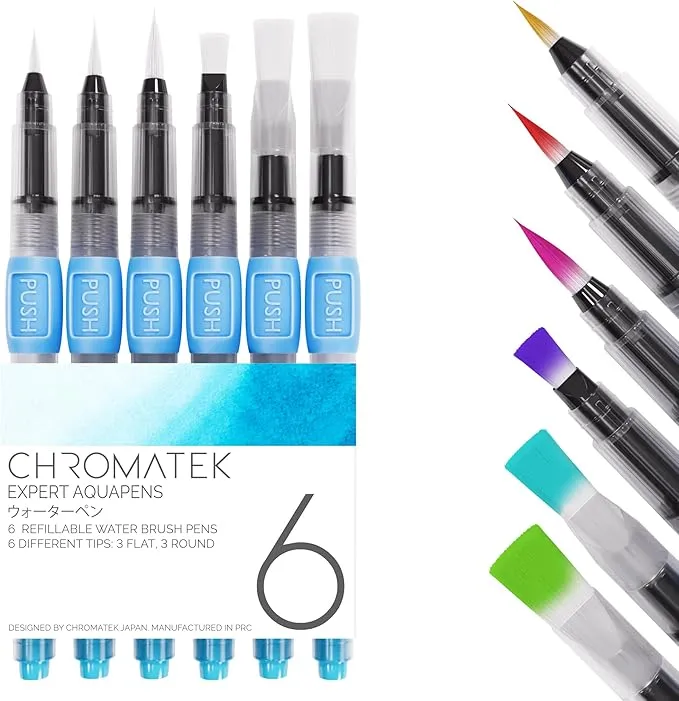Beginner-Friendly Watercolor Florals: Daisies, Roses, and Sunflowers
Watercolor painting has a unique charm, especially for beginners eager to capture the beauty of nature with just a few basic supplies. With its flowing colors and forgiving techniques, watercolor is an accessible medium that allows you to explore creativity without feeling overwhelmed.
Floral subjects, particularly daisies, roses, and sunflowers, are perfect for starting this journey. These flowers are not only visually captivating but also simple enough to paint, making them ideal for building confidence and skill as you learn to work with water and pigment.
In this guide, we’ll walk you through creating these lovely blooms step by step, covering all the basics you need to get started. Whether you’re brand new to painting or simply looking for a relaxing project, this tutorial will help you enjoy the process and make beautiful art along the way.
Basic Watercolor Techniques for Florals
Mastering a few basic watercolor techniques will help you capture the natural beauty of florals with ease. These techniques allow you to create soft petals, defined edges, and the layered colors that bring flowers to life. Let’s go over each method and how it applies to painting delicate flowers.
Wet-on-Wet Technique
This technique involves applying wet paint onto a wet surface, creating soft, flowing edges perfect for petals and delicate floral details.
- How It Works: Start by wetting the area of the paper where you want color, then drop in pigment. The paint will spread softly, creating gentle color gradients and soft petal shapes.
- Best For: Creating soft, blended petal edges, especially for flowers like daisies where you want a natural, feathery look.
Wet-on-Dry Technique
With this technique, you apply wet paint onto dry paper, allowing you to control the shape and edges of your flowers more precisely.
- How It Works: Load your brush with paint and apply it directly to dry paper. This results in more defined edges and helps keep colors crisp.
- Best For: Outlining and defining petals or leaves and adding sharp details, especially on roses, where each petal needs a clear outline to capture its layered shape.
Layering and Blending Colors
Layering is key to adding depth and dimension, especially when painting petals that have variations in color.
- How It Works: Begin with a light layer of color and allow it to dry completely. Then, add another layer on top, adjusting the pigment’s intensity as needed.
- Best For: Building up shadows and highlights within petals and leaves. It’s particularly effective for sunflowers, where deeper yellows and browns create a realistic effect.
Brush Strokes for Petals and Leaves
Using the right brush strokes helps you capture the shape and flow of petals and leaves with simplicity.
- Petals: For thin, elongated petals, like those on daisies, use a quick, curved stroke with a round brush, starting from the base and lifting at the end to taper the petal. For fuller petals, like rose petals, use a rounded stroke with slight pressure.
- Leaves: Use a single, steady stroke, starting at the stem and moving outward to the leaf tip. A small liner brush or round brush works well for adding the central vein or small details.
With these techniques, you’ll be able to bring a realistic yet soft look to your floral paintings. Practicing these methods will help you gain control over the flow and texture of watercolor, making each petal and leaf come alive on the page.
I like using round brushes for this, a few options are:
- Princeton Artist Brush Neptune, Brushes for Watercolor Series 4750, Round Synthetic Squirrel, Size 12
- Princeton Aqua Elite, Series 4850, Synthetic Kolinsky Watercolor Paint Brush,Round, 8

If you are on a budget and would rather use something more portable, I found the round brushes in this set are also great:
Step-by-Step Guide to Painting Daisies
Daisies are one of the simplest yet most charming flowers to paint, making them perfect for beginners. With their soft, delicate petals and sunny centers, they come to life with just a few easy steps.
Step 1: Create a Light Sketch of the Daisy’s Shape
- How to Sketch: Lightly outline the daisy’s round center and draw simple lines radiating outward to mark where each petal will go. Aim for an even, circular arrangement of petals around the center.
- Tip: Use a pencil and keep the sketch light, as watercolor is transparent and can show pencil lines if they’re too dark.
Step 2: Apply a Light Wash for the Petals Using the Wet-on-Wet Technique
- How to Apply: Dampen each petal with clean water using a small round brush. While the paper is still wet, add a light wash of color (such as a very diluted yellow or blue for a soft hint of shade).
- Tip: Work one petal at a time to avoid colors blending between petals. This helps keep the daisy’s fresh, clean look.
Step 3: Add Details with Layering, Such as the Center of the Daisy and Subtle Shadows
- Center of the Daisy: Once the petals are dry, use a wet-on-dry technique to paint the daisy’s center with a rich yellow or golden color. You can add tiny brown or orange dots while the center is still wet to create texture.
- Shadows and Petal Definition: For added depth, layer a slightly darker wash at the base of each petal where it meets the center. This subtle shadow will make the petals look more realistic and three-dimensional.
Tips for a Natural Look
- Keep It Light: Daisies have a delicate, almost translucent look. Keep the color washes soft and avoid heavy pigments.
- Vary Petal Shapes: Don’t worry about making each petal identical. Slight variations give the flower a more natural, lifelike appearance.
- Leave White Space: Let some areas of the petals remain unpainted to mimic the daisy’s bright, fresh look.
With these steps, your daisy will have the gentle simplicity that makes it so beautiful. Practice each step slowly, and soon you’ll find yourself painting them effortlessly!
Step-by-Step Guide to Painting Roses
Roses may seem complex, but with a patient, layered approach, you can capture their rich, layered petals beautifully. Here’s a straightforward guide to help you paint a stunning watercolor rose.
Step 1: Begin with a Light Sketch of the Rose Outline, Focusing on Petal Structure
- How to Sketch: Start by lightly sketching the rose’s center as a small spiral. Then, sketch the outer petals as larger, rounded shapes circling the center. Aim to build outwards from the middle, creating a layered look.
- Tip: Keep the sketch soft and simple, focusing on the general petal placement rather than heavy detail. This will serve as a guide for your paint layers.
Step 2: Use the Wet-on-Dry Technique to Define Petals and Create a Rose Shape
- How to Apply: Using a round brush with a small amount of pigment, start at the innermost petals and paint each petal with a wet-on-dry technique. This will give you sharper, defined edges, allowing each petal to stand out.
- Tip: Work from the center outwards, letting some areas overlap slightly to capture the layered effect of rose petals. Don’t worry about perfect shapes; variations add realism.
Step 3: Layer Colors to Build Depth and Shade within the Rose, Capturing a Natural Look
- Layering for Depth: Once the first layer is dry, add a second layer with a slightly darker shade, focusing on the base of each petal and areas where petals overlap. This will create shadows and give the rose a three-dimensional appearance.
- Blending for Softness: If you need softer transitions between light and dark areas, use a damp (not soaked) brush to gently blend the edges of each layer, creating smooth gradients.
Tips for Painting Roses Successfully
- Be Patient: Roses are intricate, so take your time with each layer. Gradual shading builds a more realistic, beautiful rose.
- Control Water and Pigment: Roses often look best with delicate color shifts. Adjust the water-to-paint ratio to keep colors soft and blendable.
- Experiment with Color Depth: For a natural look, vary the intensity slightly within the petals, keeping the center darker and the outer petals lighter.
With a bit of patience and practice, you’ll see your rose bloom on the page, capturing its classic beauty and layered elegance. Keep practicing, and each rose will become easier and more rewarding to paint!
Step-by-Step Guide to Painting Sunflowers
Sunflowers are vibrant, cheerful flowers that are a joy to paint with their bold colors and distinctive shape. Follow these simple steps to capture the sunflower’s sunny appeal in watercolor.
Step 1: Sketch the Sunflower’s Shape, Focusing on the Large Center and Radiating Petals
- How to Sketch: Begin by drawing a large circle for the center of the sunflower. Around it, sketch petal shapes radiating outward, varying their length and direction slightly to make the flower look natural and lively.
- Tip: Keep the petals roughly similar in size, and don’t worry about perfection—natural variation adds character to your flower.
Step 2: Apply a Bold Yellow Wash to the Petals, Using Wet-on-Wet for Soft Blending
- How to Apply: Wet each petal individually, then drop in a rich yellow wash using the wet-on-wet technique. The color will flow and blend softly within each petal.
- Tip: For added dimension, you can drop in touches of orange or darker yellow at the base of each petal while the paint is still wet. This will create a natural gradient as the colors blend.
Step 3: Add Details to the Sunflower’s Center and Highlight Shadows for Depth
- Painting the Center: Once the petals are dry, focus on the center. Use a wet-on-dry technique to paint it in a deep brown or warm dark hue, then add a few tiny dots of darker pigment while it’s still wet for a textured, seed-like effect.
- Adding Shadows: For depth, layer a slightly darker shade of yellow or light brown at the base of each petal where it meets the center. This helps each petal stand out and gives the flower a fuller look.
Tips for Painting Bold, Lively Sunflowers
- Be Bold with Color: Sunflowers are known for their vibrant, saturated colors, so don’t be afraid to use a rich yellow and deepen the color as needed.
- Create Texture in the Center: A bit of texture in the center makes the flower look realistic. Try adding subtle dots or lines with a fine brush for a seed-like effect.
- Work Petal by Petal: Painting each petal individually helps keep them defined and allows for softer color blending.
By following these steps, you’ll capture the warmth and brightness of a sunflower. Embrace the bold colors and let each petal reflect the energy and life that sunflowers are known for!
Embrace the Blooming Journey
Watercolor florals are a wonderful way to experience the joy of painting. With each brushstroke, you’ve learned how simple techniques can bring delicate daisies, intricate roses, and vibrant sunflowers to life on paper. Watercolor’s flowing, forgiving nature makes it an ideal medium for capturing the beauty of flowers, encouraging a relaxed and rewarding creative process.
As you continue, remember that every painting is part of your growth. Embrace any imperfections—they add character and uniqueness to your work. Experiment with different shades, petal shapes, or even try new flowers to discover what feels right for you.
Whether you paint a full garden or a single bloom, adding your own artistic flair is the next step. So, keep exploring and let each flower you paint be a testament to your progress and creativity!
